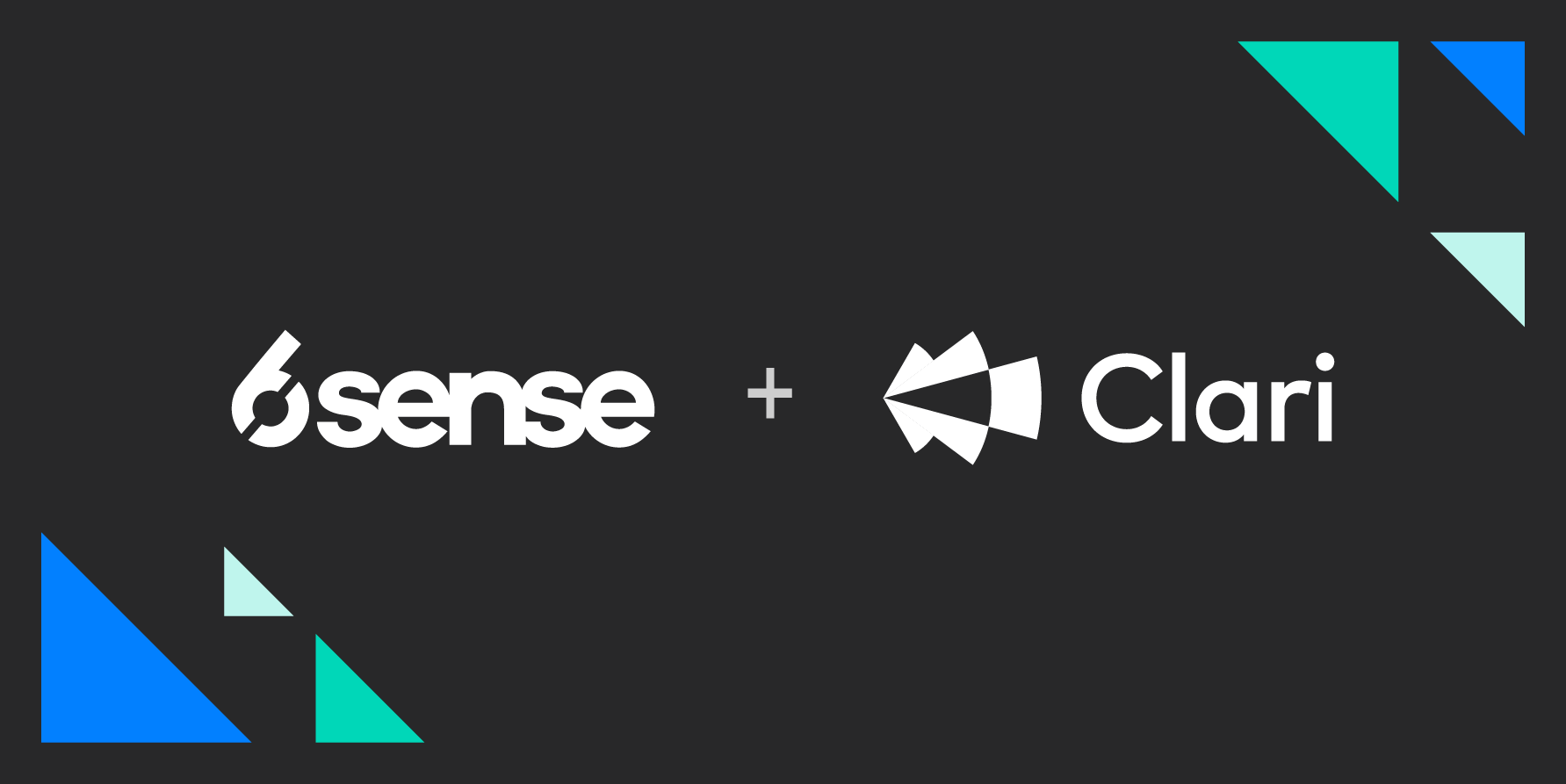When I recently checked in with one of my customer success managers on a renewal, they assured me the deal was in the bag.
“Everything’s fine. The renewal’s on track,” they said. “The customer loves us and they’re happy.”
But I have a healthy sense of caution around any renewal’s likelihood of closing. So I checked the data in our revenue operations platform, Clari, and saw a different story: Customer health was blazing red, indicating a high chance of churn, and their contract was scheduled to end in just four weeks. Suddenly, it was clear this deal was at risk.
As the vice president of customer success at 6sense, it’s my responsibility to coach our reps to success. And that disconnect between the rep’s judgment and the data signaled a coaching opportunity.
Together, the customer success manager (CSM) and I shifted to a data-driven conversation to course-correct before it was too late to prevent losing a valuable customer relationship.
The takeaway is this: Optimism alone doesn’t close deals. To win more business, you also need a proactive risk reduction strategy based on objective, concrete, and accurate revenue data.
The role of customer success has changed. Customer success isn’t just about making people happy. It’s about unlocking mutual value for your customers and your company.
That’s the guiding principle for the rising revenue metric, net dollar retention (NDR), which is a percentage illustrating how your company maintains customer revenue in the long term. NDR is a huge focus at the highest levels of our business, because it indicates customer value and satisfaction.
In addition to reviewing net-new logos, 6sense’s board members and investors are also looking at our NDR and our ability to retain and grow our existing customers. That means my customer success team has aggressive customer satisfaction, retention, and growth targets.
Still, earning renewals and expansions can be a new muscle for CSMs who have historically focused only on qualitative results. For us today, success looks like predictable, measurable retention and expansion over the course of a seamless customer journey.
During a recent roundtable discussion—Powering Predictable Customer Retention & Expansion—I outlined 6sense’s data-driven, revenue-focused approach to customer success. Here, I’ll share details on how our planning, deal inspections, and cross-functional alignment all drive higher revenue and better NDR.
Build your future: Proactively plan for renewals
As the adage goes, the best time to plant a tree was 20 years ago. Likewise, trying to save an at-risk contract that’s set to end in the current quarter often means scrambling to avoid churn before the clock runs out.
Future planning is a critical part of our renewals strategy at 6sense. Looking at the renewals of tomorrow better positions us to close deals well before the contract expires. We may be in Q3, but we’re already planning for renewals in Q1 of the next fiscal year.
Getting ahead of risk is key. At 6sense, we use Clari to filter upcoming renewals by key indicators like usage data and health scores to gauge whether a renewal is on track, or if it might need extra support. We do this several quarters in advance. This way, we gain runway and time to address any issues, and ideally boost their customer health score.
Being proactive saves us from avoidable stress and from going into what I call “save mode,” where we have to take extraordinary action to support at-risk customers.
Pipeline inspection: Gauge expansion readiness
Renewals are only part of the net dollar retention equation. Like sales teams have done for years, customer success teams are now responsible for building pipeline. Our team is particularly focused on building expansion pipeline for customers likely to increase their partnership with us.
To me, there are two types of expansion deals:
- Organic expansions: An organic expansion occurs when a customer is getting so much value out of their current product package, that they want to get even more. This means a customer comes to you requesting a larger contract. An example: A customer has high adoption and usage rates that prompt them to purchase more product licenses.
- Proactive expansions: I call these opportunities “hunted” because our customer success team has proactively identified them through pipeline inspection activities. These can be based on several factors, such as positive customer health, a certain number of logins per week, new investment, series funding, or recent acquisition activity.
At 6sense, some of the factors we evaluate to determine if a customer might be receptive to expansion include:
- Account health scores: Generally, if your customers are getting the results and value they want, they’re likely to increase their spend with you.
- Adoption and usage: Customers with more frequent logins, higher usage stats, or larger numbers of user licenses may also be open to expansion opportunities.
Revenue operations: Align revenue teams with shared data
Alignment is a core tenet of revenue operations as a philosophy and practice. We embody that at 6sense, and we use revenue operations technology to build common understanding across our teams.
In addition to our customer success team, 6sense’s finance and sales teams also use Clari. It’s vital for us to have a universal software solution that everybody knows how to use. We use Clari as a shared source of truth. It houses all of our revenue data, so we can all stay on the same page and push toward shared strategic goals.
That shared visibility has been critical for us as a hypergrowth company. Our customer base has increased 155% over last year alone. With the sales team regularly adding a high volume of net-new accounts, our customer success team had to scale to support our growing customer base.
Because I previewed the sales team’s projected forecast in Clari, I staffed up my team to align with increased demand for customer success.
Plus, making the business case for additional headcount was that much easier because our finance team already knows and trusts the data.
Ultimately, successful renewals and expansions aren’t based on feelings. They’re based on the right data, used at the right time, with the right customers. Revenue operations technology delivers that data.
* * *
In my view, there’s no such thing as post-sales. Throughout my career, I’ve believed that everyone is always in sales, no matter what function or role we’re in. The marketing team contributes to sales’ success. Our customer success team contributes to marketing and sales’ success. Even enablement teams are selling concepts and resources internally.
We’re all connected and aligned because we all want to grow our business by helping more companies grow theirs—whether it’s through net-new customers, renewals, cross-sells, or upsells. We’re always looking for ways to add value for our customers.
Read more:


